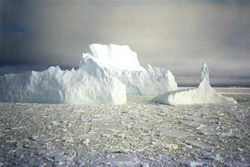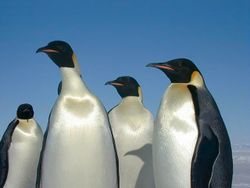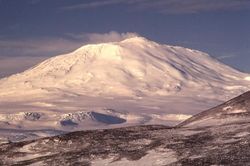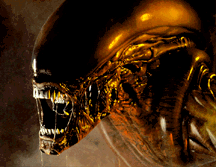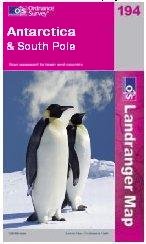Antarctica
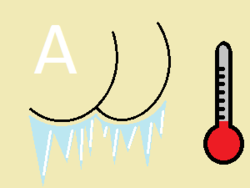
Antarctica is a large mass of snow and ice found at the ass of the Earth (unless, of course, you're upside-down, in which case it is at the breasts).
Antarctica is populated by a few hundred scientists and researchers who would rather be anywhere else but there. This makes it both the least populated continent and the one with the highest combined IQ.
Geology and Climate[edit | edit source]
Antartica is best known for its vast amount of cold. Temperatures have been known to dip below absolute zero, and sometimes colder if you factor in the wind chill. There is supposedly a part of Antarctica which gets warm sometimes, but the guy who told me said it was called The Shitlands, so I don't believe him.
The lowest layer of Antarctica is a useless jumble of rock. Above this rock is a vast glacier made up mostly of ice, but containing significant amounts of emperor penguin skeletons, unholy fossils, ground-up bits of sailing vessels from the age of exploration, and frozen alien space-ships. Oh, and a Stargate.
Surrounding the glacier is a frigid sea called the Antarctic Ocean. Many people foolishly believe that this body of water was named after the continent. However, recent historical evidence suggests that the ocean's discoverer, Captain James Cook named the ocean after his aunt Arthurina, whom he affectionately called Artie. He named the body of water Auntie-Artie's Ocean. However, in the late 19th century, uncultured whalers continuously mispronounced the name on their return to Europe, and over time Auntie-Artie became simply "Antarctic." The fact that the continent the ocean was next to was called "Antarctica" was just one of those weird coincidences.
The southern ocean (ignore the previous paragraph) is the only latitude on earth where the wind whips around unencumbered by encountering any land-masses. The seas are mountainous. Solo around-the-world yachtspersons have to go through there to actually get around the world, resulting in much expense and hilarity.
Flora and Fauna[edit | edit source]
The climate of Antarctica makes it a superb breeding ground for ice which covers its entirety. Ice is found growing wild all around the world but nowhere in as vast a quantity as Antarctica (and perhaps the arctic). Ice grown on the Antarctic continent is found all over the world but is mainly exported by communists, being that they control the world's ice supplies.
While it is thought that Antarctica was once a warm land mass, the inhospitable climate has forced nearly all animal life from the continent. Only the most retarded animals remained, and over time stubbornly evolved in pointless ways to cope instead of just getting over it moving on like everything else did. In this way, the remaining animal life is not only retarded, but emotionally repressed, as they cannot admit that they made a mistake in sticking around. Sigmund Freud's Antarctic expedition in 1890 to get these unhappy animals to confront their feelings was a failure, resulting in many penguin-related injuries.
The stupidest animal to be found there is the emperor penguin. Slow, ugly and lacking in personal hygiene, emperor penguins are the principal food source for most Antarctic life, including other penguins. These creatures are felt to be even less intelligent than dust bunnies, being that they waddle into blizzards, lay eggs on their feet to keep them from freezing, then shit all over everything. Then, when their young predictably starve to death, they have cheesy flashbacks about their babies which cause them to steal other penguin's chicks and shit on them. Truly, truly pathetic, but complete fucking hilarity.
The cleverest animal in Antarctica is merely a visitor: the albatross. The albatross shows up briefly during emperor penguin hatching season to grab a quick bite, then fucks off to somewhere that doesn't suck so bad. Emperor penguin attempts to discourage albatrosses by building egg-launching anti-aircraft guns seemed somehow counter-productive and were abandoned. Contrary to popular opinion, albatrosses do not come with wafers. But they are seabird flavoured.
Seals often appear along shores of polar oceans. Like most Antarctic animals, their diet is largely emperor penguin-based. In order to stay warm, their skins are reinforced with large amounts of blubber, which is a cool word, and should be said at least 15 times a day, like a religion.
Polar bears, found only in the Arctic, often travel to the Antarctic just to mess with people's heads. So if you see a polar bear in the Antarctic, calm down. You haven't just teleported thousands of miles north. You do not have super-powers. That bear's just fucking with you.
Antarctica holds a strong magnetic pull for English people and Norwegians. Small packs of Englishmen can be observed trailing herds of Norwegians during the chilly to jolly chilly months. Civilized people are advised not to approach either species or face lengthy and inescapable conversations about rowing or pickled herring.
History of Dead Explorers[edit | edit source]
Whether it was the foolish pursuit of the South Pole, ill-advised interest in things man was not meant to know, or just plain stupidity, Antarctica has drawn men and sled-dogs to their deaths for two hundred years. Here are some notables:
The Ross Expedition[edit | edit source]
James Clark Ross headed an expedition just to check things out in 1831. As was the style at the time, his real aim was gold. Disappointment met him at first, as he was only able to discover some crappy ice-shelf, which he named after himself. Believing that the fumes of Mount Erebus might be a gold smelt run by penguins, he foolishly jumped into the active volcano's cauldron and was instantly burned to ash.
Scott and Shackleton[edit | edit source]
Robert Falcon Scott set out in a 1901 expedition to find the South Pole. Their route took them from McMurdo sound to within 857 kilometers of their intended destination before Scott froze to death. A surviving member of his expedition, Ernest Shackleton, thought he could do better. He decided to head his own suicidal quest for the South Pole, and in 1907 came within 180 kilometers of it before he died of starvation. Scott, not to be outdone, decided to be the first man to die twice in the Antarctic. In 1912 he got his wish. His all-frozed-up corpse was given a hero's welcome in England where doctors diagnosed him as suffering from stiff upper lip and advised against his returning to transpolar expeditions.
This just pissed Shackleton right off. In 1914 he launched his definitive polar expedition to be killed as many times in the Antarctic as possible. He was first crushed to death when his ship, Endurance, was caught in pack ice off the coast. Then he was mauled and eaten by sled dogs during his escape across the ice. He starved to death a second time on Elephant Island, and lastly succumbed to exposure during a harrowing and unsuccessful life-boat crossing to South Georgia Island. He returned to England expecting a dead hero's welcome, only to find that World War One had started and the English public had lost their interest in multiple deaths. Stubborn to the end, Shackleton returned to South Georgia Island to die a sixth and final time, on this occasion of a heart attack.
The Bluebeard Expedition[edit | edit source]
The Bluebird Expedition was the result of all of the AIDS on the beards of the explorers, turning their beards blue. A lot of good men lost amazing beards that year.
Excerpt from Capt. John Miller's diary:
"It seems the AIDS is becoming too powerful; we may need to create a polar bear army to combat the AIDS. On an unrelated note, we have been sacrificing three members per day to the leopard seal that keeps stalking the camp, but it still seems to be restless. Lt. Arnold may need to use our secret weapon: ignorance."
After one long harsh month of eating frozen pancakes and snow cones, the polar bear army was given authority by the Penguin Empire(forgot how to link) to help the frozen blue beard sailors. The polar bear army escorted by P.S.A. Penguin Special Forces, were lead the Wall of the Westeros Region. Encountering deadly White Walkers and rogue penguins, found themselves face to face with a leopard seal. After a long treacherous day of fighting the mighty leopard seal, they finally managed to get inside the camp of the boor AIDS sailors.
Excerpt from Capt. John Miller's diary on that day:
"I would of cried when I saw the polar bear army had come to rescued us, but my tears would of created a frozen water line along my cheeks. Never before I was so joyous to see the polar bears. They snuggled with us to keep us warm from the ball freezing tempertures...such furry creatures. Soon after, the bears gave us a barber trim on our beards to stop the AIDS from spreading. Wonderful day it was, truly wonderful."
The Arkham Expedition[edit | edit source]
Launched by Miskatonic University in Arkham, Massachusetts, this was the first expedition to reach one of the eldrich alien cities on the continent, resulting in considerable loss of life. For a complete description, see History of Alien Occupation below.
The Byrd Expeditions[edit | edit source]
Richard Evelyn Byrd pioneered an interesting method of dying in the Antarctic. In the 1920's, aeroplanes were all the rage. By constantly dying in plane crashes in sub-polar expeditions, he renewed the public's interest in the continent and also dying multiple deaths. For two decades, Byrd crashed fifteen planes in the Antarctic, though only five of the crashes were fatal and he was unable to beat Shackleton's record. However, he did inadvertently reach the South Pole and map the entirety of the continent in the process.
History of Alien Occupation[edit | edit source]
The question of alien life in Antarctica was been a bitterly-fought battle in the world's scientific community. Rumors of the existence of a prehistoric city at the south pole have attracted many explorers and scientists to the region, only for them to die pointlessly. The question of what was killing them was hotly debated during most of the 20th century.
The Elder Thing Theory[edit | edit source]
In 1936, historian H. P. Lovecraft documented the harrowing story of the Arkham Expedition to Antarctica in his article, "At the Mountains of Madness." In it, he chronicles the discovery of an ancient city founded millennia ago by a race of elder things, who were exterminated by hideous blobs called shoggoths. The article took the scientific world by storm and was reprinted in such publications as National Geographic, which at the time was too busy printing an article about how great Nazi Germany was to check Lovecraft's facts. Lovecraft's absurd story was believed as gospel by geologists and naturalists for almost fifty years after its publication.
Lovecraft Debunked[edit | edit source]
The first clue that "At the Mountains of Madness" was a load of shit was a 1982 video publication by naturalist John Carpenter called "The Thing." It was a revisiting of Howard Hawk's 1951 Antarctican research and detailed the discovery of a spaceship found lodged in the ice. At the time, Carpenter's research was dismissed by the scientific community because it was believed that neither elder things nor shoggoths had the capacity for star travel any longer. His video was quietly tucked away, but maintained its die-hard followers.
One of these followers was explorer Paul W. S. Anderson, who was so entranced with Carpenter's and Hawk's research that he headed his own Antarctic expedition. His video-documentary "AVP" shattered Lovecraft's incorrect history of alien occupation in the area. Anderson discovered that the ancient city in Antarctica was not millennia old, but merely a few thousand years old. Its builders were human, though they were enslaved by a race of aliens which Anderson dubbed Predators, to whom the ice-bound starship belonged. Humans were merely used as incubators to raise Xenomorphs, whom the Predators hunted for sport. One day the hunt went bad, and a Predator launched a freeze-bomb, turning Antarctica into a frozen wasteland.
Unified Alien Theory[edit | edit source]
Lovecraft's supporters die hard. I'm not sure where it is, but somewhere in theoretical scientist Stephen King's thesis The Dark Tower, he unifies the two warring scientific theories. In it, he states that there are, in fact, two alien cities. Lovecraft mentioned an even bigger city to which the scientists dared not venture, and this was undoubtedly the city which Anderson visited in AVP.
However, this theory is strongly opposed amongst neo-AVPists. Critics point out that if shoggoths exist, they are obviously tougher than Xenomorphs, and Predators would not bother with their elaborate human incubating scheme: they would just hunt shoggoths. Proponents counter that Predators would hunt shoggoths if they could, but they are scared of how tough they are. Indeed, the creature whom John Carpenter described in "The Thing" did display several characteristics similar to shoggoths, and it is worth noting that the frozen spaceship was completely abandoned. Could it be that a shoggoth got on board a Predator spaceship and killed all its inhabitants? This idea has raised interesting questions about Predator psychology and has ignited several pointless nerd-debates about a theoretical AVPVS.
Goa'uld Invasion of 2004[edit | edit source]
On the TV Show Stargate SG-1 during a March of 2004 TV episode, the United States Air Force defended the world when the Goa'uld System Lord, Anubis, launched an attack against Earth in Antarctica. A special U.S.A.F. team known as SG-1 (from Stargate Command, or SGC) led the defense and won a decisive victory against Anubis's fleet when they discovered that the Ancients had left us the coolest weapon in existence and used it to destroy the invading fleet.
Since then, the SGC has established an international coalition that is studying the Ancient outpost and has since sent a specialized team to the Pegasus Galaxy and the lost city of Atlantis (which isn't really lost, the Ancients just decided to move). The USAF is, as of February 2007, unsure whether the Ancients are, in fact, Elder Things.
NATO Response[edit | edit source]
Concerned by what seems to be a growing number of alien and interdimensional incursions into the south pole since 2004, NATO, in conjunction with Stargate Command, Miskatonic University and the Sliders, has drafted a non-military response to the threat. Concerned that a large military force might upset the delicate socio-alien-political balance in the region and result in the destruction of earth, a team of specialists made up of alien-attractive targets will be dispatched to McMurdo Sound in late 2014.
At present the team consists of a goofy-but-lovable unpopular guy, an arrogant jock, a blonde cheerleader, a Shakespeare-quoting scientist, and a sassy black guy. This hand-picked team is designed to attract all aliens within a 1500-mile radius and die horribly. NATO hopes that the shoggoths, predators, xenomorphs, goa'uld and whatever the fuck else is down there will converge violently on the area and just kill each other off.
TOP NEWS[edit | edit source]
A new story has been uncovered recently. Antarctica is home to hundreds of new species that were not discovered until October 16, 1923. These beautiful species were accidentally stumbled upon by Sir Walt Disney after he opened his closet door and stepped inside to find a portal that teleported him to Antarctica. At first he called the place NARNIA, but later changed it to Antarctica so that he could use the name Narnia in one of his movies that takes us through his great adventures at this place. Among other species in Antarctica, the most commonly found species are a variety of mice, ducks, pigs, dogs and so on.
1. MICE- The male and female species of mice found here are called Apodemus Mischolous and Apodemus Mintesa, more commonly reffered to as Mickey and Minnie Mouse.
2. DUCK- There are many species of ducks found here. But the three most interesting are Anas platydonanaladi, Anas platydaisypilai and Anas platyscroogemiser, A.K.A. Donald duck, Daisy duck and Scrooge, respectively.
Many other animals have also been discovered whose scientific names are yet to be assigned. They include 'Pluto'-The dog, 'Ollie'- The Pig, 'Abu'- The Monkey, 'Simba'- The Lion, and hundreds more. At one point, some of these animals were also used in the making of the adventure movie-JUMANJI.
See Also:[edit | edit source]
- University of Antarctica
- The Democratic Penguin's Republic of Antarctica
- H. P. Lovecraft
- Bipolar bear
- Worst 100 Locations of All Time
- GWAR
- HowTo:Be Antarctican

